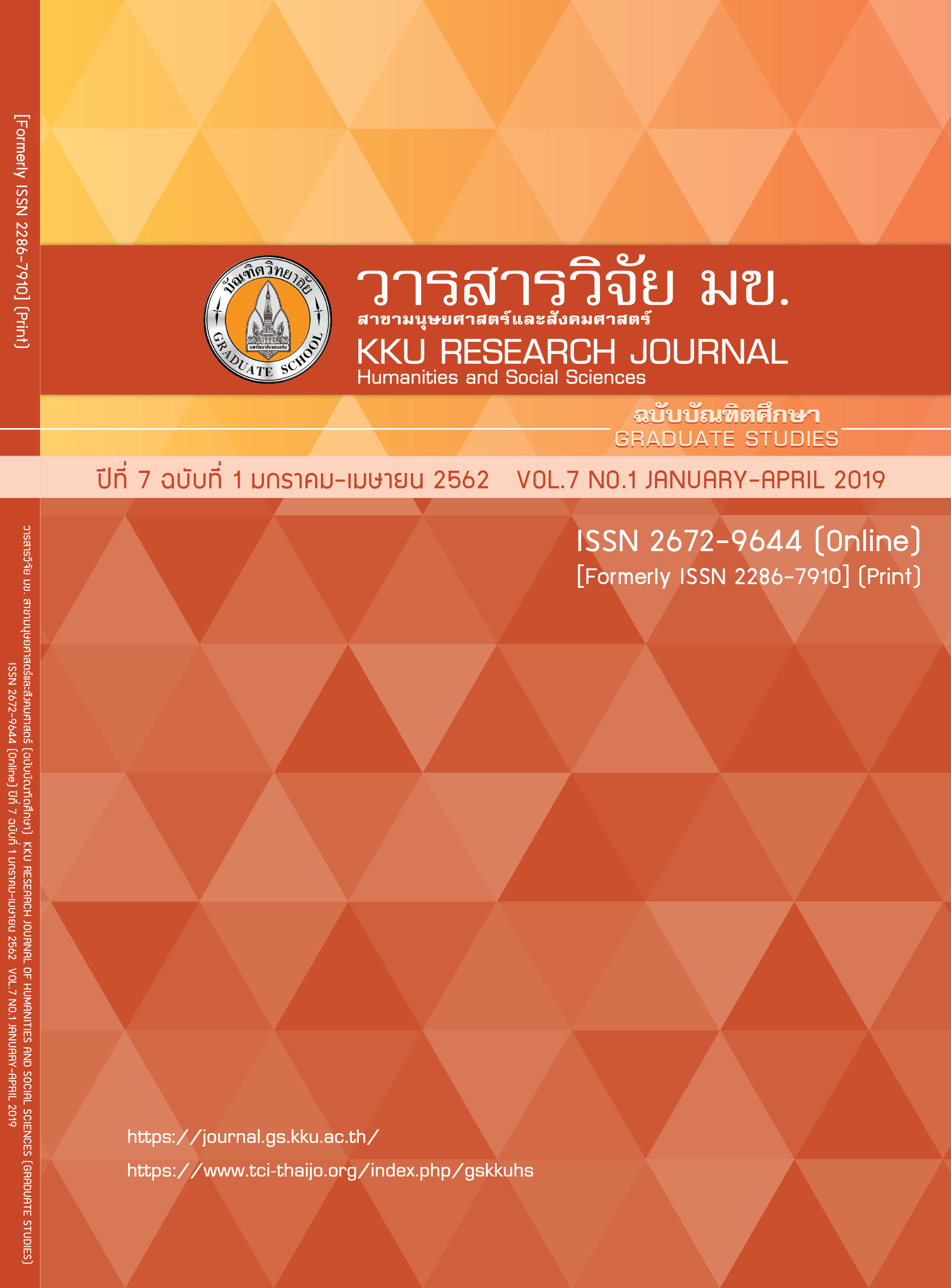An Analysis of English Code-mixing in the Television Series U-Prince
Keywords:
Code-mixing, Nativization, Motivation for code-mixingAbstract
Currently, English code-mixing is a common phenomenon, which occurs in various types of Thai media. It is used both for communication purposes and as a symbol of modernization. Furthermore, English is increasingly used in Thai T.V. series where it reflects real life language use. This suggests that Thais are using more English in everyday conversation. This study aims to explore linguistic forms and motivations for English mixing; it also examines how meaning and features of words are modified through the nativization process. Conversational dialogue from the Thai teenage T.V. series “U-Prince” was transcribed for this analysis. The results reveal that the most found English items were at the lexical level. Truncation or shortening English words was found to be the most nativized feature while specification was the main motivation for code-mixing in the script. English mixing in the TV series U-Prince demonstrates how characters, which represent Thai teenagers from similar social and educational backgrounds, embrace and adopt English code-mixing into their conversation.
References
2. Kannaovakun P, Gunther AC. The mixing of English and Thai in Thai television program. Manusya:
Journal of Humanities 2003; 6: 66-80.
3. Ho JWY. Code-mixing: linguistic form and socio-cultural meaning [Internet] 2007 [cited 2017 Jul 22].
Available from: http://www.educ.utas.edu.au/users/tle/journal/issues/2007/21-2.pdf.
4. Muysken P. Bilingual Speech: A typology of code-mixing. Cambridge: Cambridge University Press; 2000.
5. Bhatia TK, Ritchie WC. The bilingual mind and linguistic creativity. Journal of Creative Communications
2008; 3(1): 5-21.
6. Thadphoothon J. Characteristics of the use of English by Thai academics: A Preliminary Investigation.
Suthiparithat 2009; 23(71): 107-32.
7. Lee J. A Corpus-Based Analysis of Mixed Code in Hong Kong Speech. International Conference on Asian
Language Processing (IALP); 2012. p.165-68.
8. O’grady WD, Archibald J. Contemporary linguistic analysis: an introduction. 4thed. Toronto:
Pearson Education Canada; 2000.
9. Papijit W. Thai-English code-Mixing in Hormones the series [Master’s Thesis]. Bangkok:
National Institute of Development Administration; 2013.
10. Li DCS. Cantonese-English code-switching research in Hong Kong a Y2K review.
World Englishes. 2000; 19(3): 305-22.
11. Jaspal R. Language and social identity: a psychosocial approach. Psychtalk.
2009; 64: 17-20.
12. Reyes I. Functions of code switching in schoolchildren's conversations. Bilingual Research
Journal. 2004; 28(1): 77-98.
13. Hoffmann C. An introduction to bilingualism. London: Longman; 1991.



